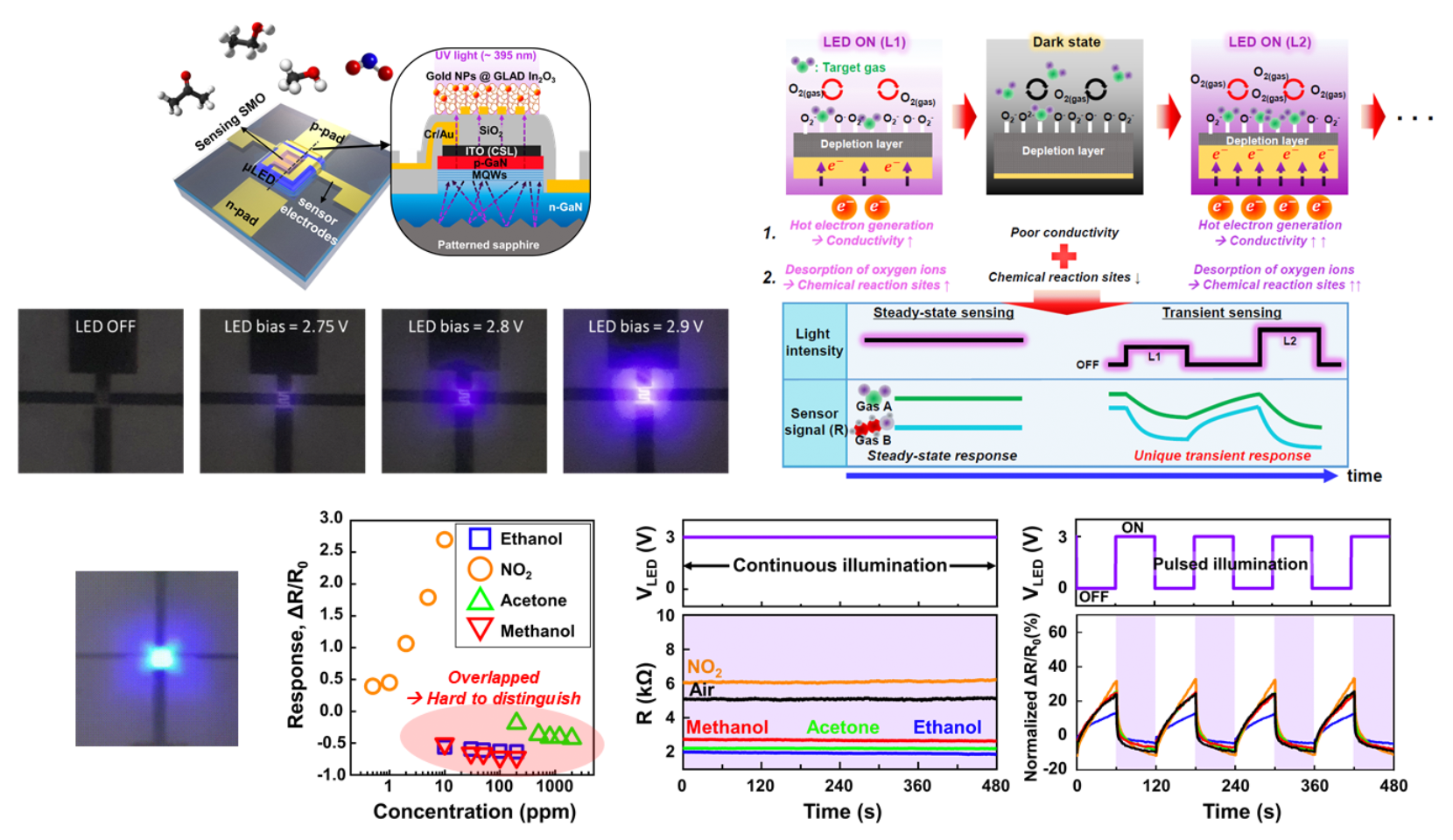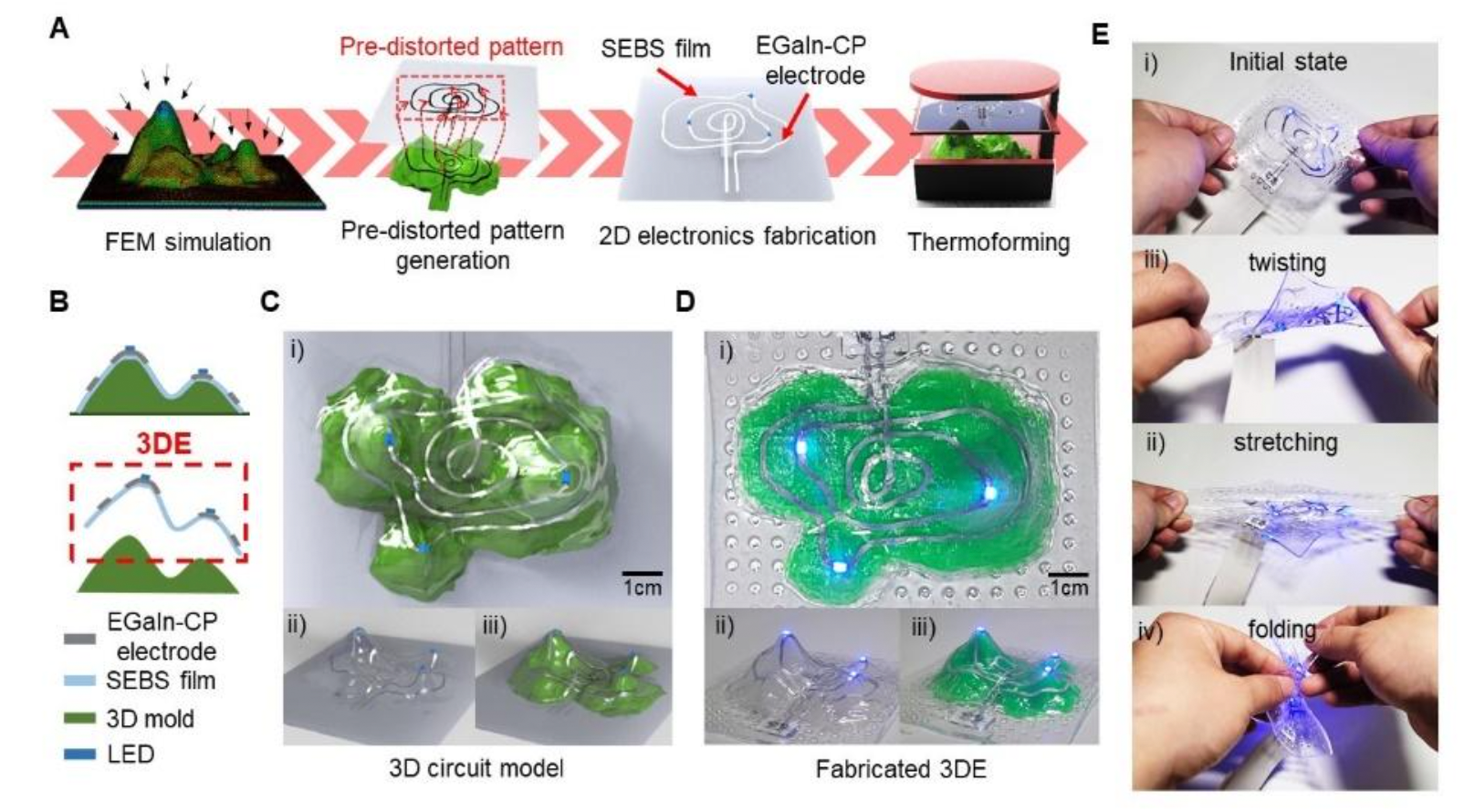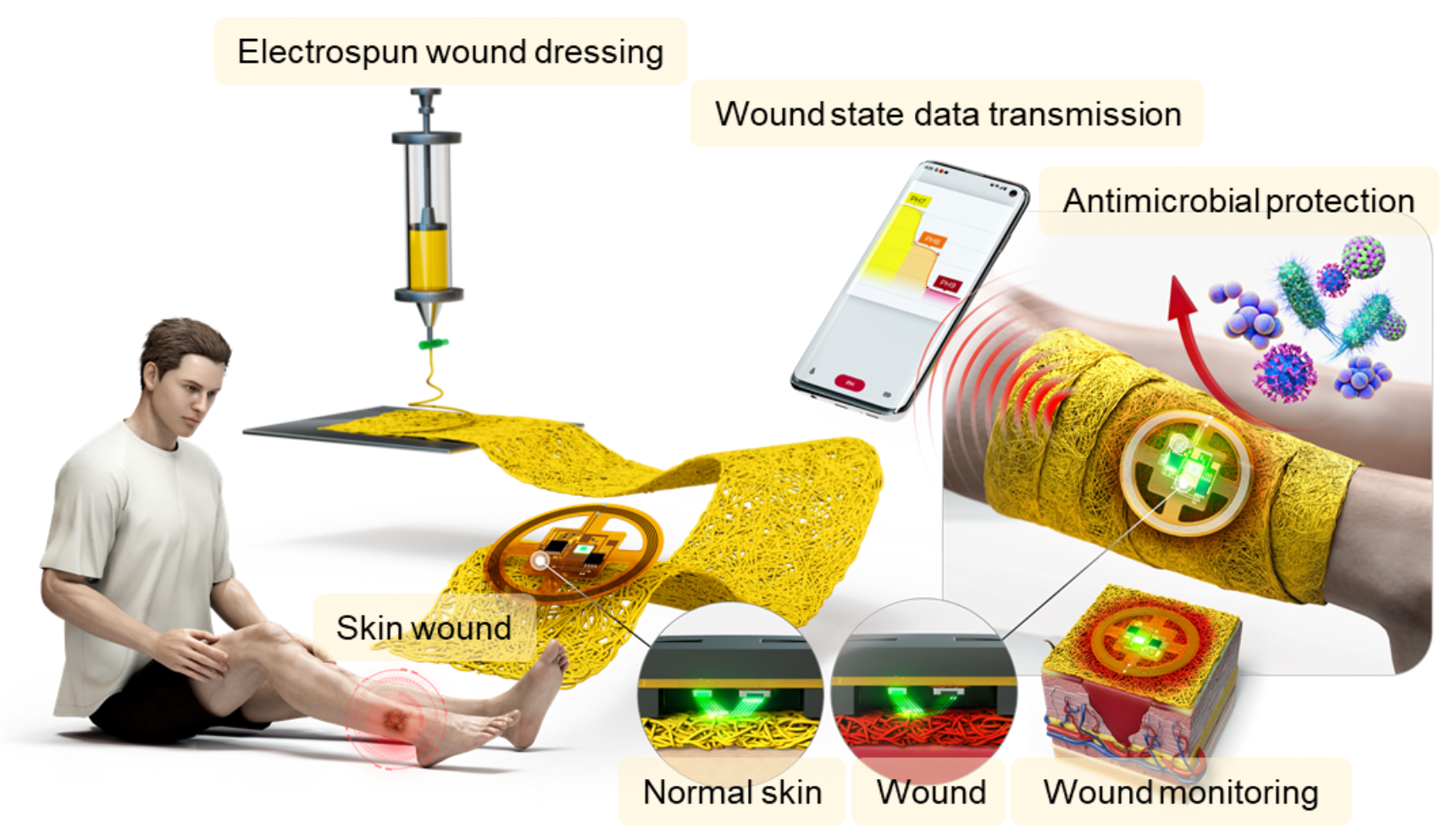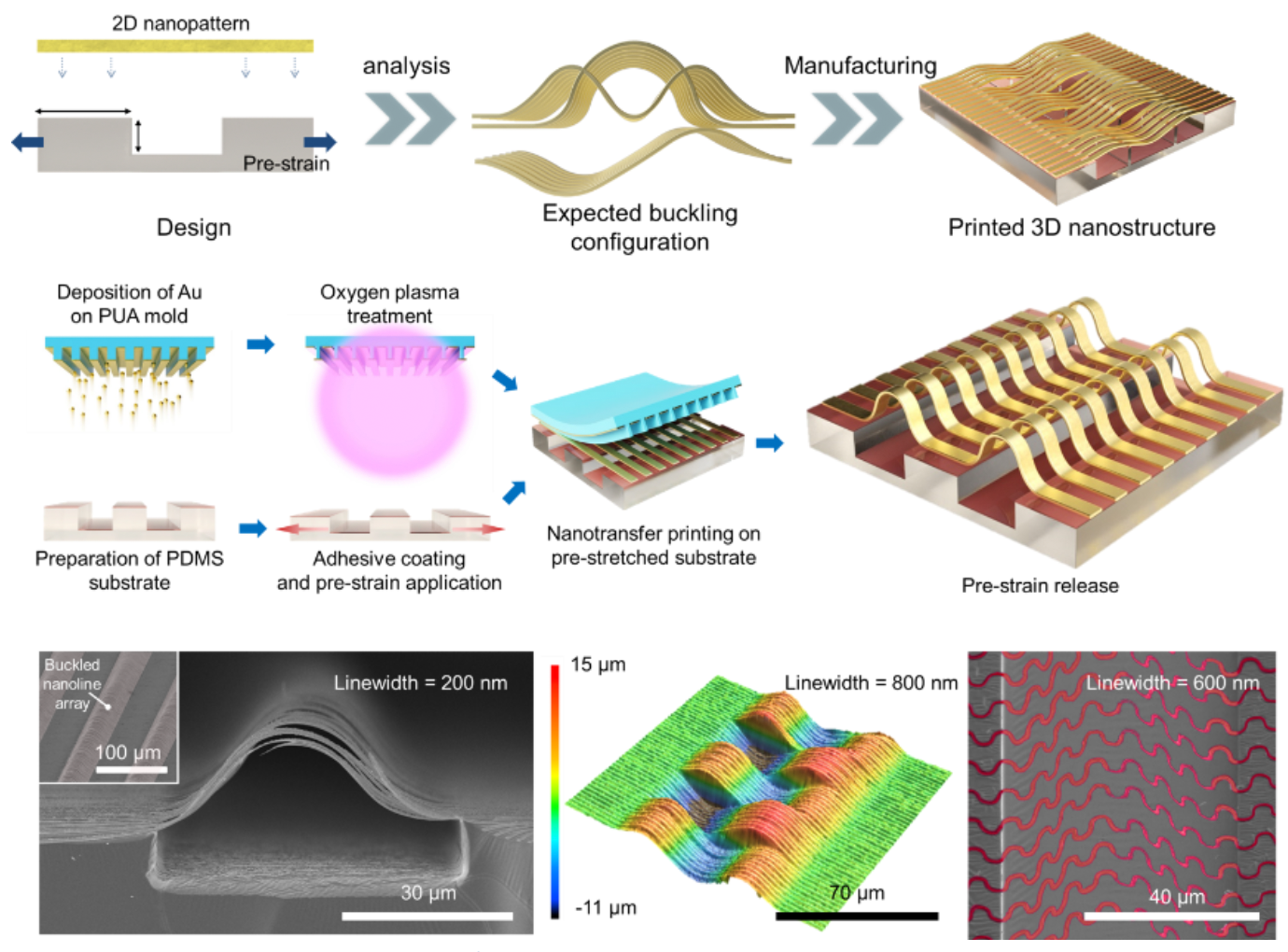1. Ultra-low-power / Integrated Environment Sensor
Our research involves the development of highly efficient, ultra-low-power, and self-powered gas sensors. Utilizing MEMS technology and locally synthesized nanostructures, we create highly sensitive and power-efficient sensors. Our novel designs include micro-LED-based gas sensors and neuromorphic sensing technologies integrated with AI algorithms for enhanced environmental monitoring. These sensors have been effectively applied in various industrial environments, including semiconductor manufacturing facilities for precise contamination monitoring, real-time oxygen detection in water electrolysis systems, and toxic gas leakage detection in factories.

2. Wearable/Flexible Sensors for HMIs & the Metaverse
We develop innovative flexible and wearable sensors to facilitate advanced human-machine interfaces (HMIs) and immersive metaverse experiences. Our flexible sensors precisely detect pressure and strain, allowing real-time feedback for posture correction and exercise monitoring using augmented reality (AR) technology. Additionally, our research extends to the metaverse domain and we are developing remote exercise/dance training systems that employ motion-sensing and haptic feedback for visually impaired users, bridging physical activities with digital interaction.

3. Biomedical/Healthcare Sensors & Clinical Applications
The lab focuses on designing advanced wearable biomedical sensors tailored for healthcare applications, including continuous patient monitoring and preventive healthcare. Our wireless and battery-free sensor arrays accurately measure pressure and temperature, significantly reducing risks associated with pressure injuries in bedridden and wheelchair-bound patients. Moreover, we have developed real-time blood pressure monitoring systems and large-area body pressure sensing pads. Our clinical research also includes integrating sensors into biopsy and RF ablation needles, enhancing procedural safety, accuracy, and patient outcomes by enabling precise real-time tissue diagnostics.

4. Micro/Nano-Fabrication & Manufacturing Processes
Our lab is committed to advancing micro- and nano-fabrication technologies to enable the production of highly sophisticated sensor devices. By engineering unique structures such as internally popped microdomes, porous elastomers combined with carbon nanotubes, and biomimicking 3D structures, we are significantly enhancing sensor sensitivity and response characteristics. Our custom-developed stretchable 3D electronic devices and thermoforming processes allow versatile and personalized sensor applications across various domains.

Summary
At MINT Lab, our vision is to spearhead technological advancements through cutting-edge sensor innovations, driving progress toward a sustainable and healthier future. We aim to deliver personalized healthcare solutions, enhance safety in industrial settings, and enable comprehensive environmental monitoring, thus contributing to societal wellbeing and technological leadership.
More details can be found on the homepage (http://mint.kaist.ac.kr)
 Prof. Inkyu Park received his B.S., M.S., and Ph.D. degrees from KAIST (1998), UIUC (2003), and UC Berkeley (2007), respectively, all in mechanical engineering. He has been with the Department of Mechanical Engineering at KAIST since 2009 as a faculty member and is currently a full professor and a KAIST Endowed Chair Professor. His research interests are micro/nano-fabrication, smart sensors for healthcare, robotics, metaverse, environmental and biomedical monitoring, and nanomaterial-based sensors and flexible & wearable electronics. He has published more than 205 international journal articles (SCI indexed) and holds more than 40 registered domestic and international patents in the area of MEMS/NANO engineering. He is a recipient of the HP Open Innovation Research Award (2009-2012), the KAIST Prize for Academic Excellence (2021), the KAIST Grand Prize for Technology Innovation Award (2019), a KAIST Endowed Chair Professorship (2017), Nanotechnologies Top 10 of Korea (2023), and NanoKorea 2023 Research Innovation Award – MIST Minster Award (2023). He is currently an editor for Sensors and Actuators B: Chemical, one of the top SCI journals in the sensor technology field.
Prof. Inkyu Park received his B.S., M.S., and Ph.D. degrees from KAIST (1998), UIUC (2003), and UC Berkeley (2007), respectively, all in mechanical engineering. He has been with the Department of Mechanical Engineering at KAIST since 2009 as a faculty member and is currently a full professor and a KAIST Endowed Chair Professor. His research interests are micro/nano-fabrication, smart sensors for healthcare, robotics, metaverse, environmental and biomedical monitoring, and nanomaterial-based sensors and flexible & wearable electronics. He has published more than 205 international journal articles (SCI indexed) and holds more than 40 registered domestic and international patents in the area of MEMS/NANO engineering. He is a recipient of the HP Open Innovation Research Award (2009-2012), the KAIST Prize for Academic Excellence (2021), the KAIST Grand Prize for Technology Innovation Award (2019), a KAIST Endowed Chair Professorship (2017), Nanotechnologies Top 10 of Korea (2023), and NanoKorea 2023 Research Innovation Award – MIST Minster Award (2023). He is currently an editor for Sensors and Actuators B: Chemical, one of the top SCI journals in the sensor technology field.






